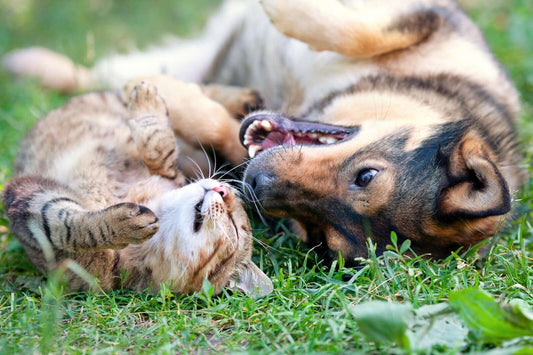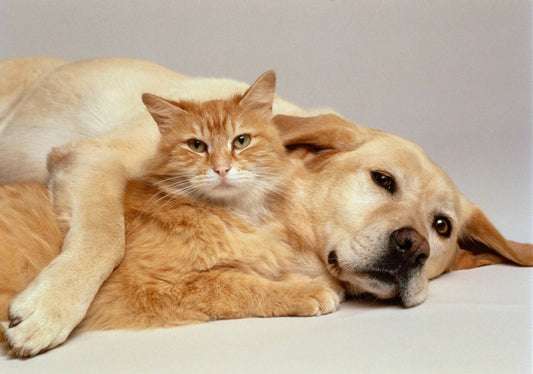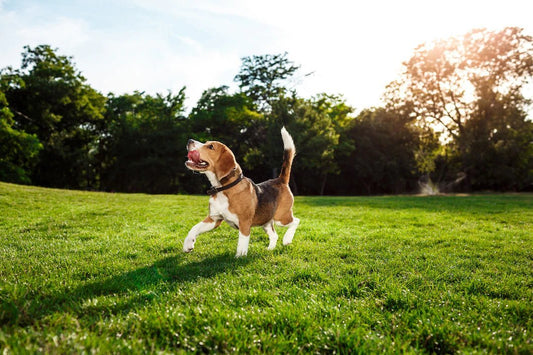Does your dog panic when you are out of sight for even a few minutes? Your dog could have separation anxiety. This is a behavioural issue where a dog displays signs of significant stress when separated from a particular person. It can happen to dogs across age groups due to difficult events such as relocation, loss of a family members or even lack of proper training. Here are some easy dog separation anxiety solutions:
What are the signs of separation anxiety in dogs?
Whining, barking, pacing, panting and nervousness when the owner leaves or shows signs of leaving
Urination and defecation even when your dog is toilet trained
Destructive behavior such as chewing, biting and clawing at furniture or walls when left alone
Excessive excitement when the owner returns
Escape attempts to follow the owner
Easy dog separation anxiety solutions:
#1: Leaving your dog alone

Dog separation anxiety training begins with teaching your dog to be alone in a room, while you’re still at home. Use a cue like ‘stay’ to step out of the room for a short period, like five minutes. Use this technique to prolong this period to an hour or more. This way your dog gets used to the idea of being alone.
#2: Keep hellos and goodbyes low-key

This is a common mistake dog parents do. Don’t make a big deal when you enter and exit the house. Leave quietly without making a fuss and resist the urge to pat your dog for a few minutes when you return.
If your dog tends to jump around and act excited, wait till he calms down completely before petting him.
#3: Reward your dog when you leave

This is the most important tip out of all dog separation anxiety solutions.
Most of us have a tendency to give our dogs a treat when we return. Turn this around and give the treat when you leave instead. This way, there’s a positive association with the idea of being left alone. Also, your dog will be distracted with the treat and not focus on you leaving.
#4: Change your going-away cues

Dogs watch us all the time to figure out what we’re going to do. Sometimes, seeing you get ready to exit the house can fuel the anxiety. If its feasible, mix up your routine. Leave discreetly through the back door or during different times in a day to diffuse the tension.
#5: Set up comfort zones

Another dog separation anxiety solution is to give your dog a comfortable space to retreat to when he or she is alone.
Making your dog’s bed welcoming by keeping his favourite blankets and dog toys within easy reach. Leave a clothing item like a t-shirt, that carries your smell, to soothe your dog. You could also play some relaxing music to keep your dog calm.
#6: Give your dog lots of exercises

A tired dog is sometimes a happier dog. Take your dog out for some vigorous exercise just before you leave the house. Running and playing will help work off some of the nervous energy. Post this, the dog is more likely to welcome the alone time to rest.
#7: Consider medication if it is serious

If your dog is consistently going into panic mode, despite applying the above dog separation anxiety training, speak to your vet for medication. Separation anxiety can be treated naturally with supplements and sprays, specifically formulated for dogs.
#8: Work with a canine behaviourist

A canine behaviourist can help understand and treat with your dog’s separation anxiety in a natural, scientific way. This is especially necessary for rescue dogs or dogs who have suffered some kind of trauma such as abandonment, natural disaster etc.
#9: Don’t leave for too long

Anything longer than five or six hours alone is stressful for most dogs. Try to have someone check in on your dog every four hours. You can also consider a day care center for dogs or get another dog if possible.
If your dog has been destroying furniture or soiling the house when you’re gone, remember that punishment or scolding will not help. Have patience when applying these dog separation anxiety solutions and eventually you’ll have a calm and happy dog!











